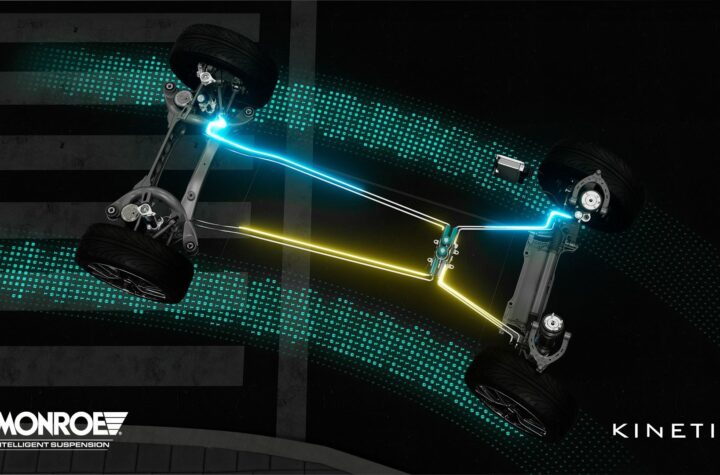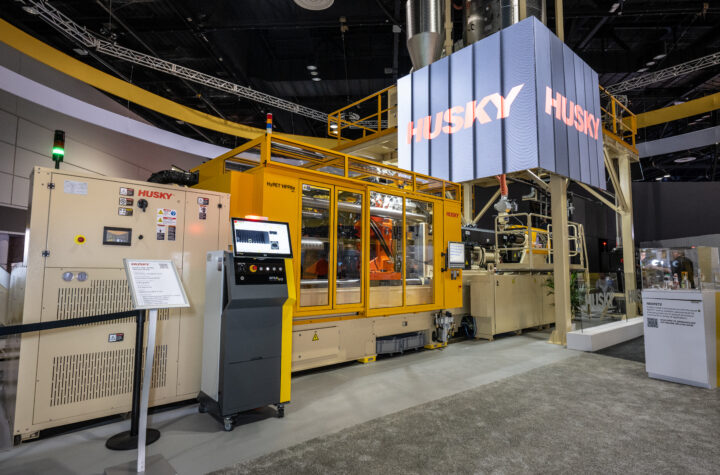The year is 2008. On his way back from work, Onn Haran, Autotalks’ CTO and co-founder, saw a vehicle in front of him slam on its brakes suddenly. Onn was forced to brake hard in order to (successfully) avoid an accident. “Immediately I thought to myself: ‘Why can’t I get an early warning in such a situation?”, says Haran. That was the birth of Autotalk.
OEMs and Tier suppliers are navigating their way through a “perfect storm” where the industry is being made to take responsibility for a wide range of issues not directly related to the manufacture and sale of passenger and commercial vehicles.
Governments are putting increasing pressure on the industry to find solutions to reduce emissions and congestion, and to raise safety standards. According to the World Health Organization around 1.25 million people are killed in road accidents every year. Half of those killed are “vulnerable road users” – pedestrians, cyclists and motorcyclists.
Vehicles which alert drivers to the potential dangers and hazards are seen as part of the solution. As far back as 2014 the U.S. National Highway Traffic Safety Administration (NHTSA) published a paper “Vehicle-to-Vehicle Communications: Readiness of V2V Technology for Application”. It states “a significant number of accidents could potentially be addressed through expanded use of more advanced crash avoidance technologies. The agency estimates there are approximately five million annual vehicle crashes (in the US), with attendant property damage, injuries, and fatalities. While it may seem obvious, if technology can help drivers avoid crashes, the damage due to crashes simply never occurs”.
V2V technology is being replaced by V2X – “vehicle to everything”. In addition to improving safety V2X connected cars will help reduce traffic congestion which, according to Texas Transportation Institute, wastes 3.1 billion gallons of fuel a year in the United States alone. This wastage translates into greenhouse gas emissions and air pollution.
V2X communication connects vehicles to other vehicles (V2V), infrastructure (V2I), motorcycles (V2M) and pedestrians (V2P) within wireless range for safety and mobility applications. It adds a new layer of confidence and certainty for drivers as it provides an early-warning system. It complements the information of other sensors, especially in non-line-of-sight, rough weather or poor lighting conditions. It also helps improve mobility as it enables traffic coordination, resulting in higher road utilization and lower emissions.
One of the leaders in the field is Autotalks, which specializes in the supply of automotive-standard chipsets that support all functions required from a V2X ECU. In 2016, Autotalks’ second-generation chipset was selected for mass production by Denso, a top global auto parts supplier and V2X ECU pioneer.
Autotalks’ V2X solution has an IEEE802.11p modem with leading communication range that works in high-mobility vehicular environment. It supports IEEE 802.11a/b/g/n/ac, enabling Wi-Fi service outside the vehicle for supplementary value-added services. It can support dual-antennas for flexible installation, and even support concurrent channel operation (Wi- Fi and IEEE802.11p).
CRATON2 was created to easily adapt to any application and vehicle architecture. Its’ high level of integration reduces development and certification effort and ensures quick time-to-market. The pre-integration provides assurance for correct functioning, secure operation and shorter development schedules. CRATON2 integrates all V2X system blocks, and includes a powerful dual ARM processor to provide the smallest V2X solution footprint.
Another main focus of the NPRM is security. Hardware Security Module (HSM) and tamper detection were requested for storing sensitive data. The chipset’s outer protection layer authenticates all messages at ultra-low latency, which assures the smallest surface of attack, thus minimizing the security risk. “Autotalks’ vision is to prevent crashes and save lives on the way to a world of driverless cars. We are doing this by offering OEMs a low-cost safety-grade V2X solution for installation in each vehicle,” said Hagai Zyss, Autotalks’ Chief Executive Officer in a media release.
Automotive Industries (AI) asked Zyss how V2X will affect autonomous cars.
Zyss: The automotive industry is witnessing a perfect storm, as autonomous functionality coupled with connectivity capabilities enables new vehicle driving models. A global interdisciplinary effort is taking place to bring the autonomous vision to reality. DSRC-based V2X communication increases the level of certainty regarding a vehicle’s surroundings, and serves as an essential element for reliable driving. V2X allows the vehicle to better understand the intentions of surrounding vehicles and to receive guidance from infrastructure. Autonomous vehicles are expected to be always connected, with V2I (Vehicle to Infrastructure) adding supplementary cloud access.
AI: How closely has your company worked with automotive OEMs and Tier Is?
Zyss: Autotalks has worked with almost all the OEMs and Tier 1s in pre-development and testing phases.
AI: How has this cooperation helped evolve your technologies? Please give examples.
Zyss: Besides leading to recognition as a technology leader and significant mass-market design wins, this collaboration greatly contributed to the development of Autotalks’ second-generation chipset.
In 2012, Autotalks began pre-development with one of the major OEMs, and through the work process with them we got to understand what is important from their perspective, and to fit our product to their requirements. More specifically, the V2X device was embedded in their shark-fin antenna. One of their specifications was that it will be temperature tolerant and function in 105°C.
In response we developed the first V2X device for such extreme conditions. It is still the only V2X chipset that can be reliably used in an antenna or headliner. Our work with OEMs and Tier 1s continues to help us enjoy design breakthroughs. Our second-generation devices are the most advanced in the market because of the feedback we receive. Autotalks is now one of the leading Tier 2 innovators. Our work with the OEMs and Tier 1s shapes the architecture of their devices: a clear win-win situation for all involved.
AI: Is the ease of integration of your V2X device a major advantage?
Zyss: Autotalks offers a complete V2X solution, which is easy and fast to integrate into any vehicle. Additionally, the solution is low-cost and self-contained – it is almost as easy as “plug and play”. The user can simply insert it and the device works at maximal security level with no additional headaches. It is due to the device’s easy integration that mass production can begin immediately. This is also very important for implementing the NPRM.








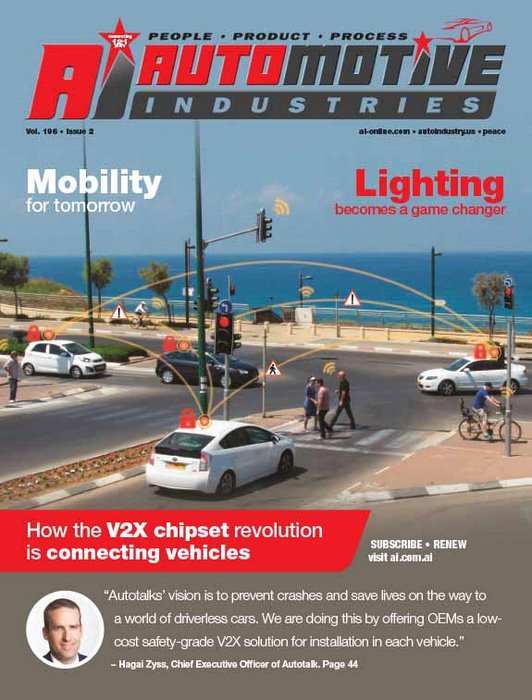





































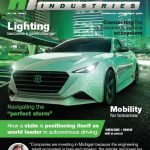 Test tracks for disruptive technologies
Test tracks for disruptive technologies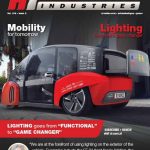 LIGHTING  becomes a game changer
LIGHTING Â becomes a game changer Connecting the autonomous vehicle ecosystem
Connecting the autonomous vehicle ecosystem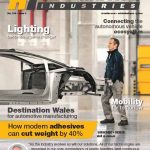 Adhesive technology to make vehicles Lighter, Stronger, Safer, Quieter and Greener
Adhesive technology to make vehicles Lighter, Stronger, Safer, Quieter and Greener Zero false positive  cybersecurity to protect vehicle ECUs
Zero false positive  cybersecurity to protect vehicle ECUs
